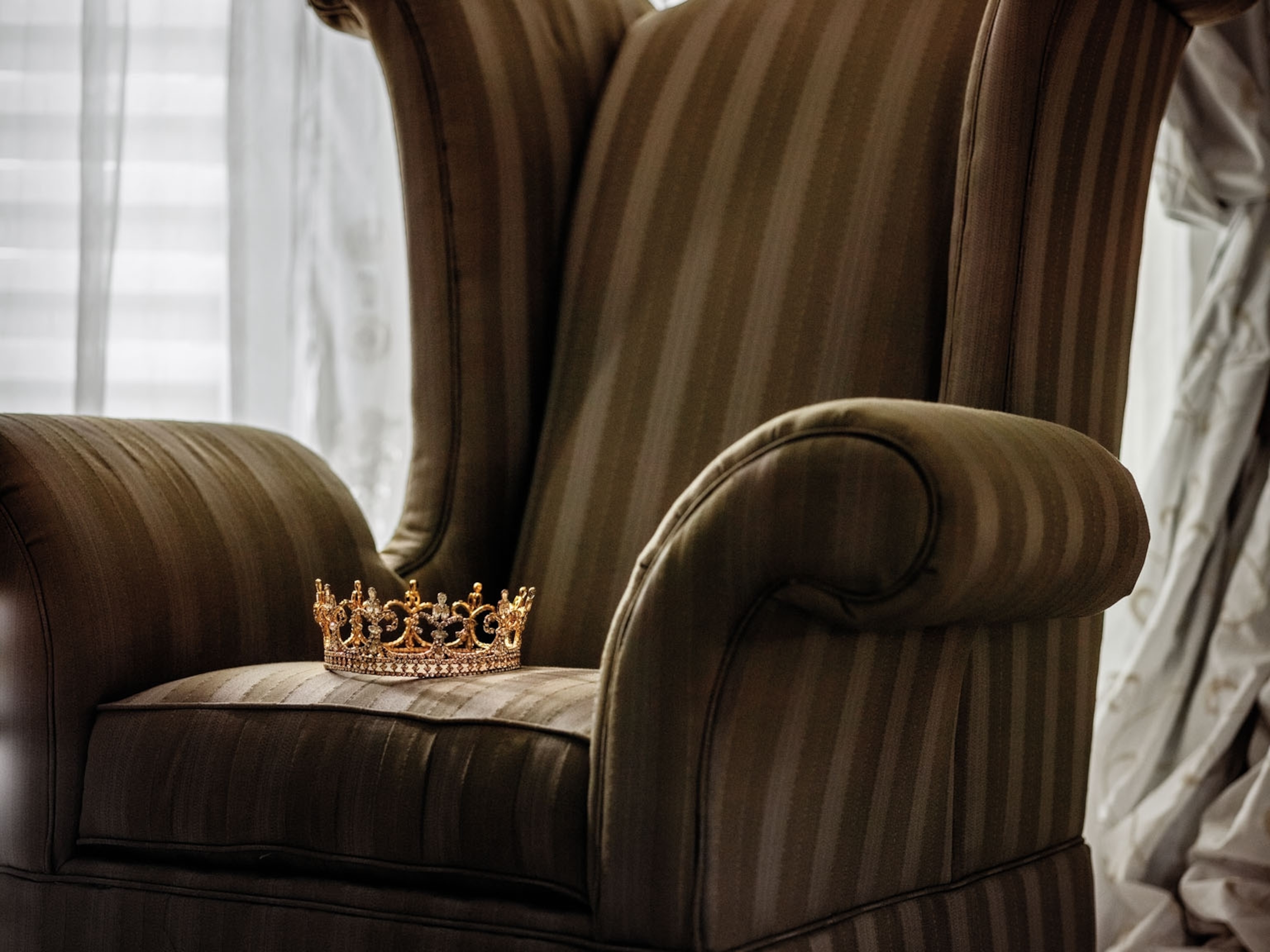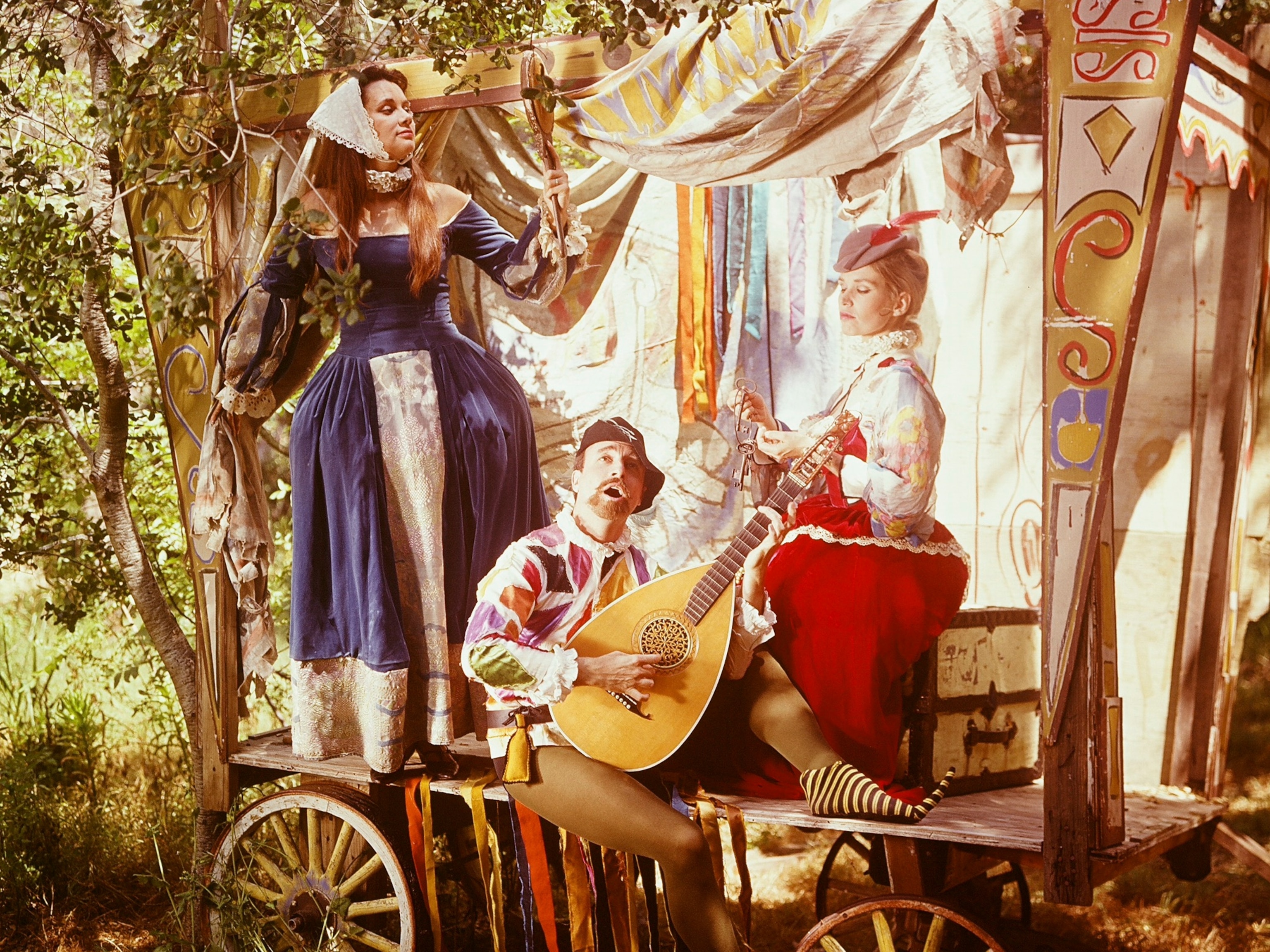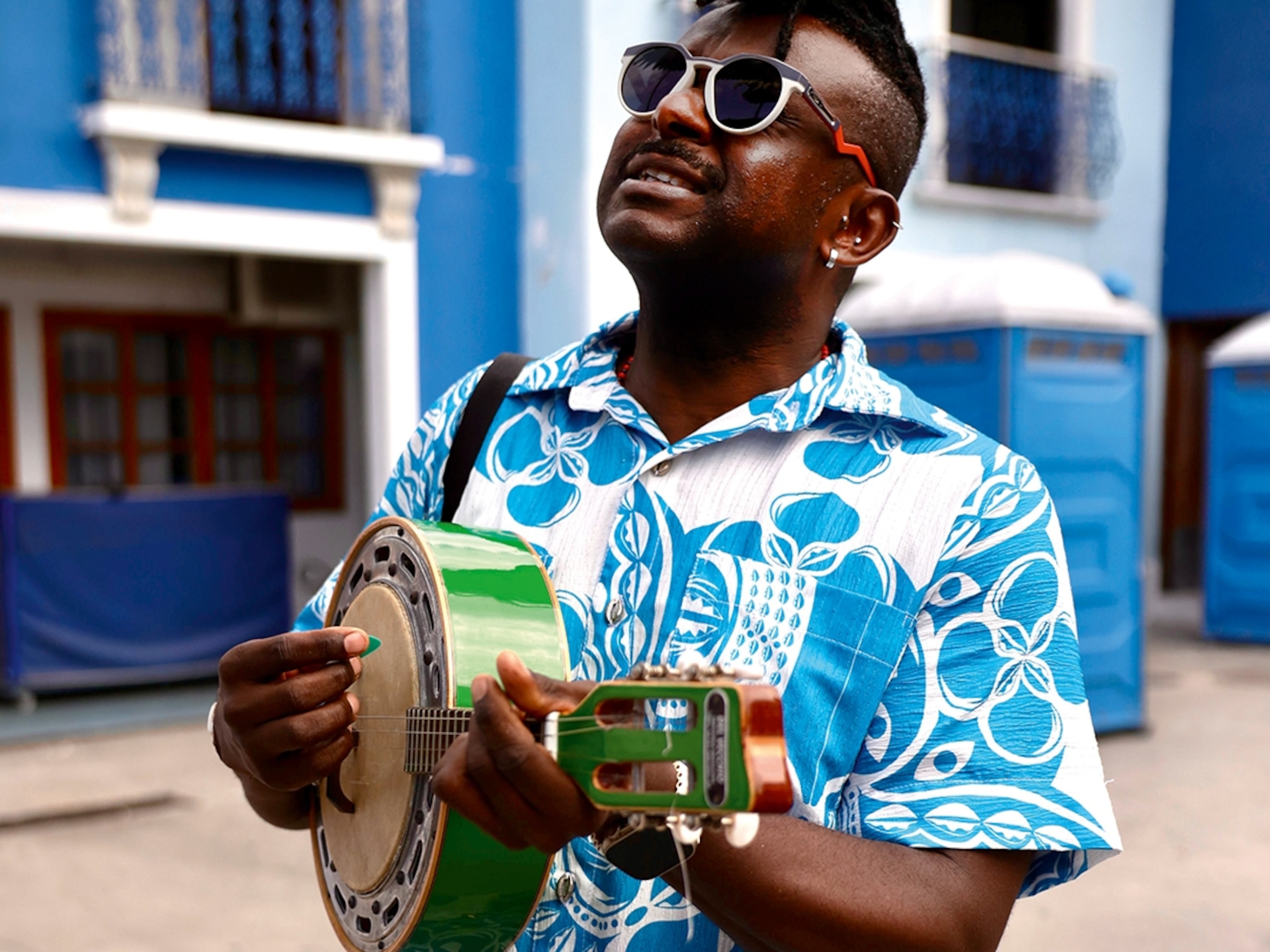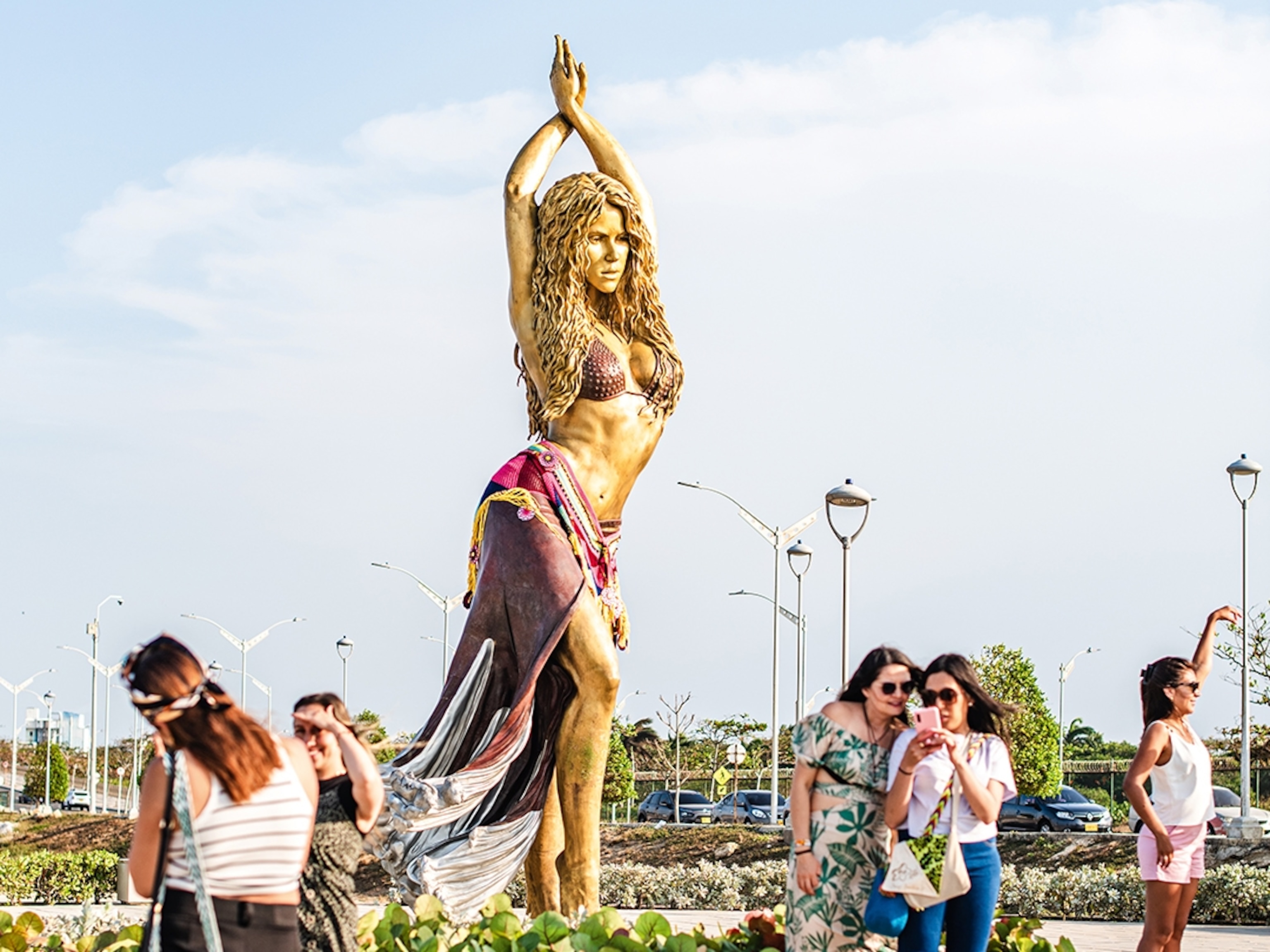
New Orleans celebrates a muted Mardi Gras—but the rituals remain
Carnival revelers are cautiously hopeful that this anomalous year will shape future celebrations for the better.
Angela Estevez was about to give up. The pandemic had slashed retail sales at Miette, her New Orleans shop dedicated to locally handcrafted works, and she didn’t think she’d be able to stay open much longer. Facing another slow month just wasn’t feasible. Then something magical happened.
In the wake of the city’s decision to cancel all Carnival parades in 2021, a grassroots effort quickly took hold: hire local artists to decorate homes as though they were parade floats. Soon neighborhoods were awash in jewel tones, metallic streamers, and funky creations honoring local traditions and beyond, from Cajun cooking to Shark Week.
For Estevez, who sells local artists’ large, elaborate flowers usually seen on parade floats, the movement led to a sales bonanza. “This is like what Beanie Babies were,” Estevez said of the subsequent sales spike. “It’s been a wild ride.”
Estevez feels grateful, but she’s thinking too of all the city’s culture-bearers—like dance groups and costumers—whose work didn’t translate to this year’s version of Mardi Gras.
In much the same way that it has revealed disparities in nearly every facet of American life, the pandemic has unmasked the fragility of Carnival’s ecosystem. The cancellation of the parades had a ripple effect throughout the Crescent City’s creative community. Left without this annual outlet, the makers, artists, and performers found new ways to express the spirit of the holiday.
“We’re a bohemian city. [Our culture] is what we have, this is who we are, and we need these people’s lives back,” she said. “We can’t forget about them in the meantime.”
In the days leading up to this year’s Mardi Gras, New Orleans still displayed a cacophony of color, glitter, and music throughout the city, along with a quiet sense of hope—that this pandemic year is an anomaly, and that the creativity that sprung from it will shape future Carnival seasons for the better.
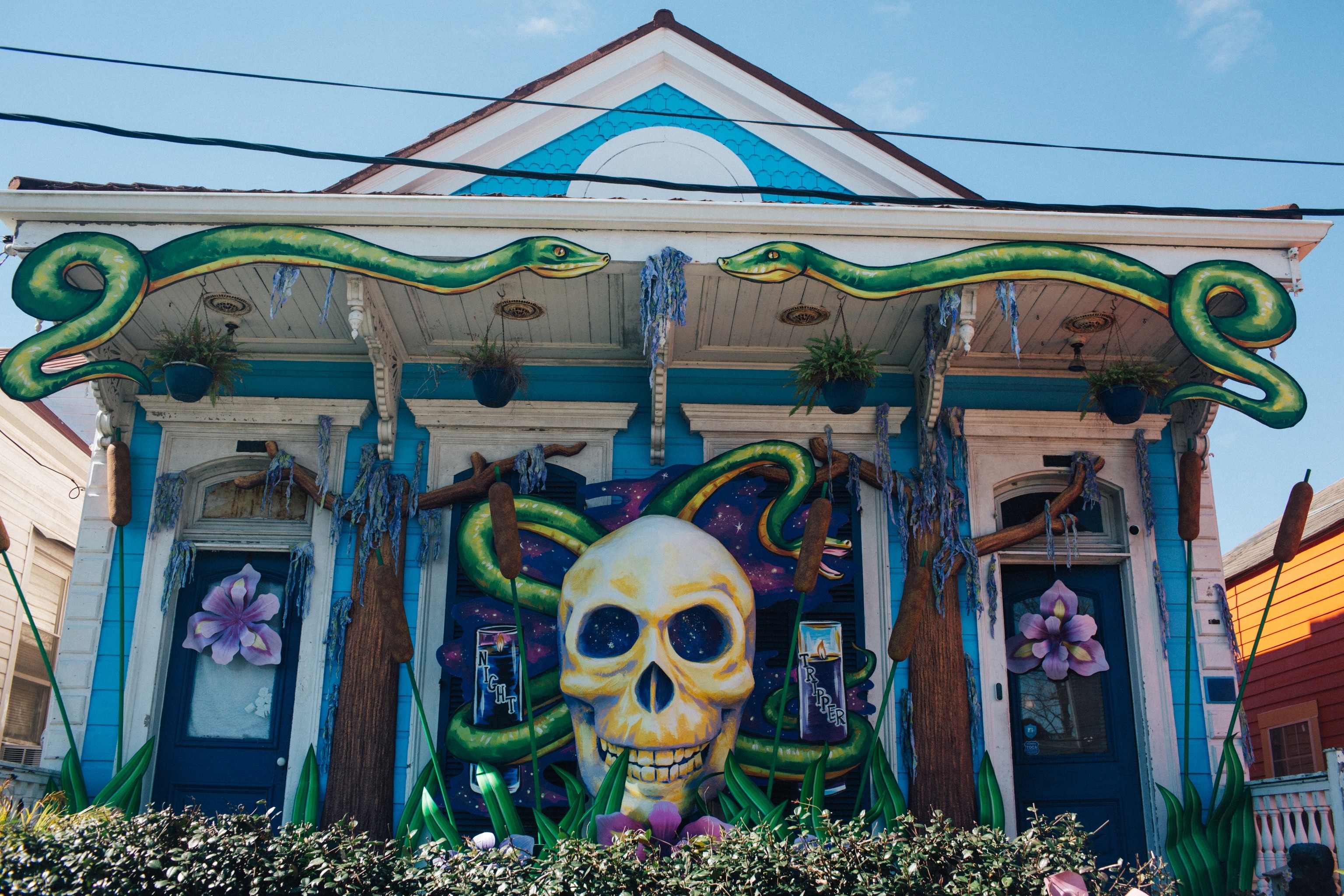
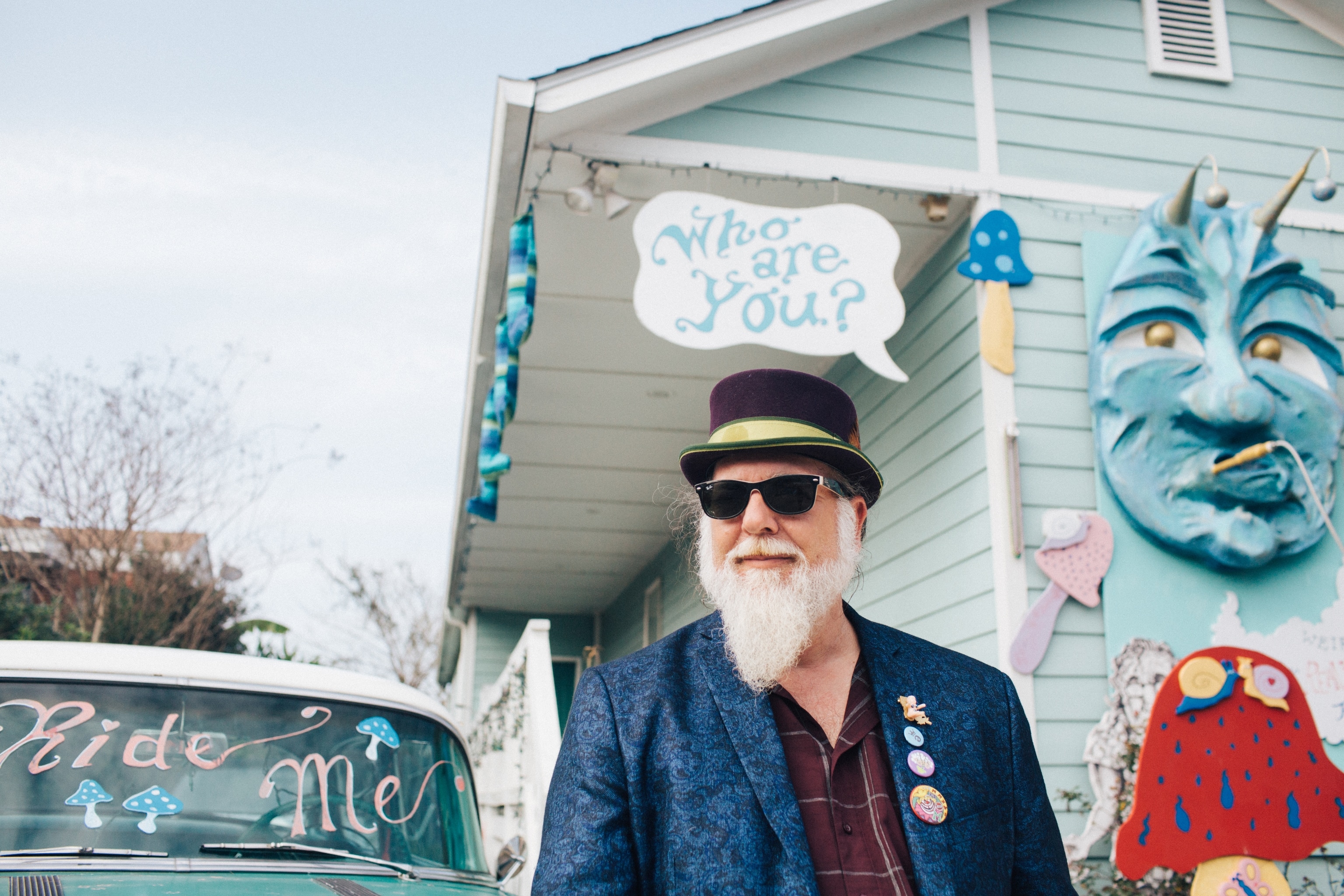
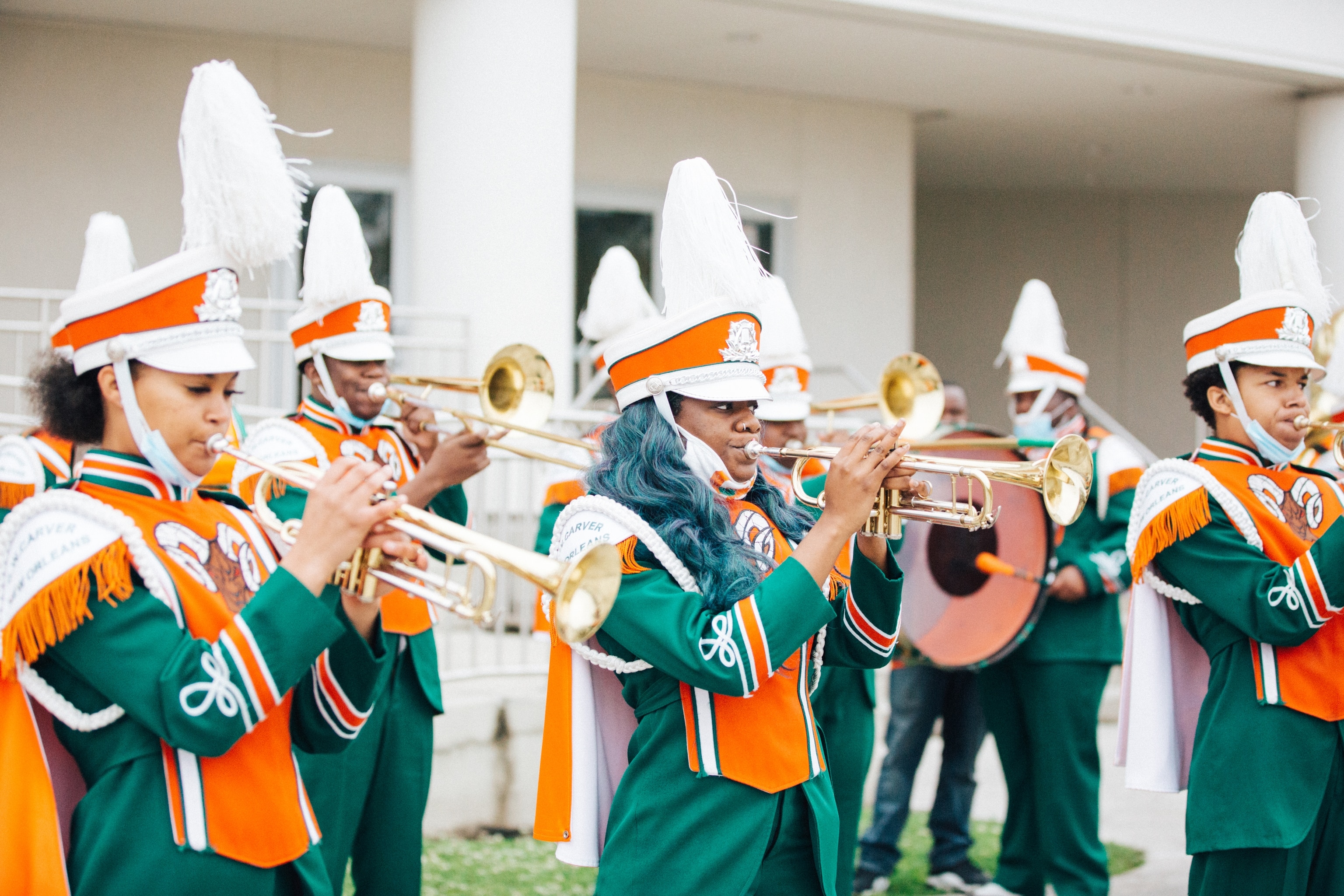
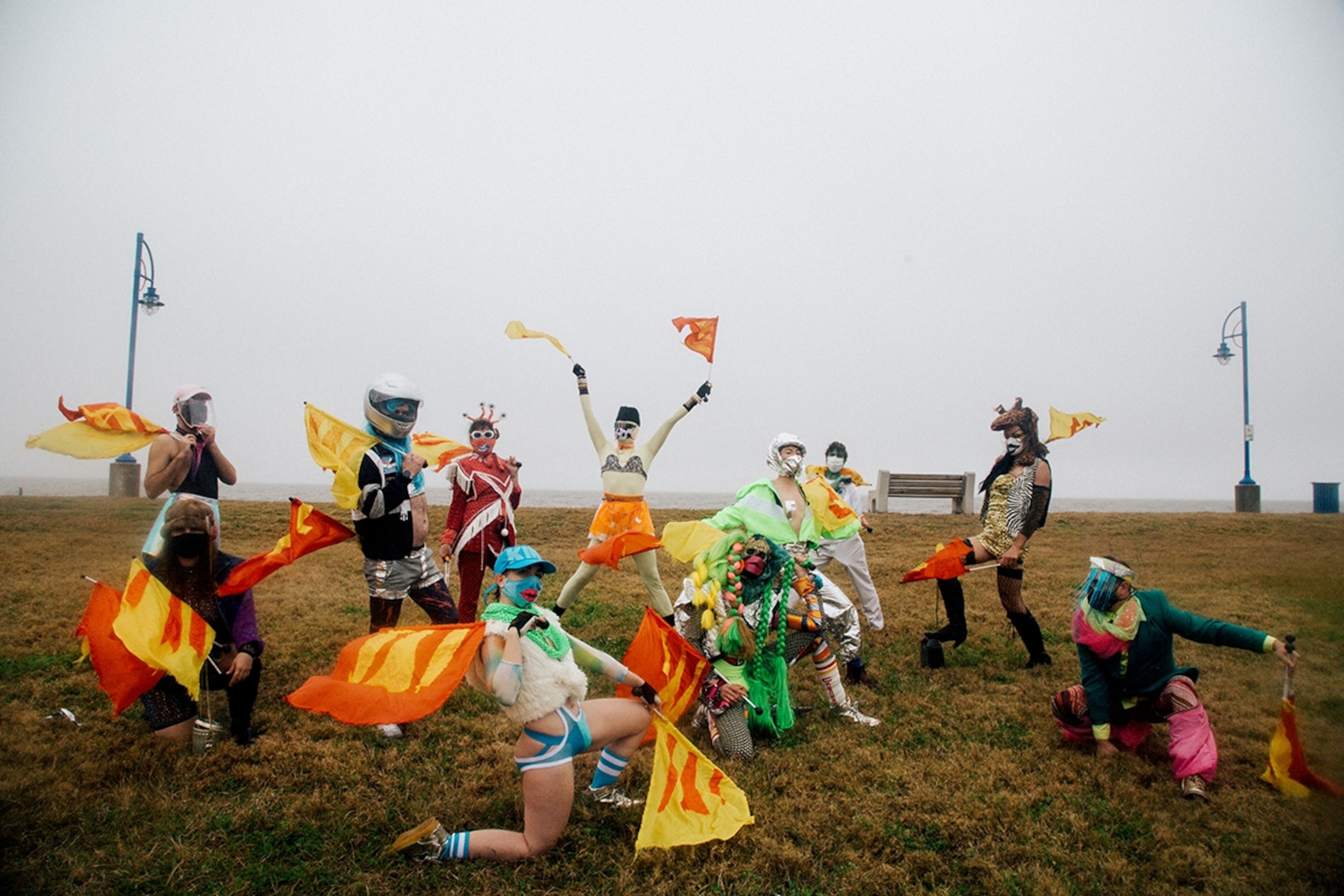
Highlighting traditions
The Saturday before Mardi Gras was cold and blustery. But amid the gray a burst of color lined the banks of Lake Pontchartrain, where the Flaming Flagettes—dressed like an intergalactic color guard at a discotheque—navigate dance moves in platform heels.
The Flagettes are one of the dozens of marching dance groups that would typically fill the space in parade lineups between the floats and high school marching bands. With no parade, they masked up and instead filmed a video for fans in the final days of the season.
For Dan Chan, an ICU nurse at an area hospital, participating in the video with the Flagettes was a blissful moment after a hellacious year. While working on the front lines, Chan experienced the resulting whiplash after last year’s celebration, when the city became an early hot spot for coronavirus infections, due in large part to then unknown community spread.
“Going straight from an incredible celebration into the weirdest Lent I’ve ever had,” Chan said, “it felt super surreal.”
Studies show that the 2020 Mardi Gras events likely caused tens of thousands to become infected with the coronavirus, and the havoc it wreaked on the city’s cultural community, especially its Black residents, is something locals are still processing. (In 2020, New Orleans culture marched on despite the pandemic.)
“We can’t all get sick and get wiped out, or there will be no more Carnival or Mardi Gras,” said Bruce “Sunpie” Barnes, the Big Chief of the Northside Skull and Bone Gang, a group that for centuries has been waking up the city on Mardi Gras morning to remind locals of their mortality and the importance of living life well. “There won’t even be anybody with the cultural memory to make it happen. We can’t keep losing, unwarranted, that kind of cultural and ephemeral knowledge.”
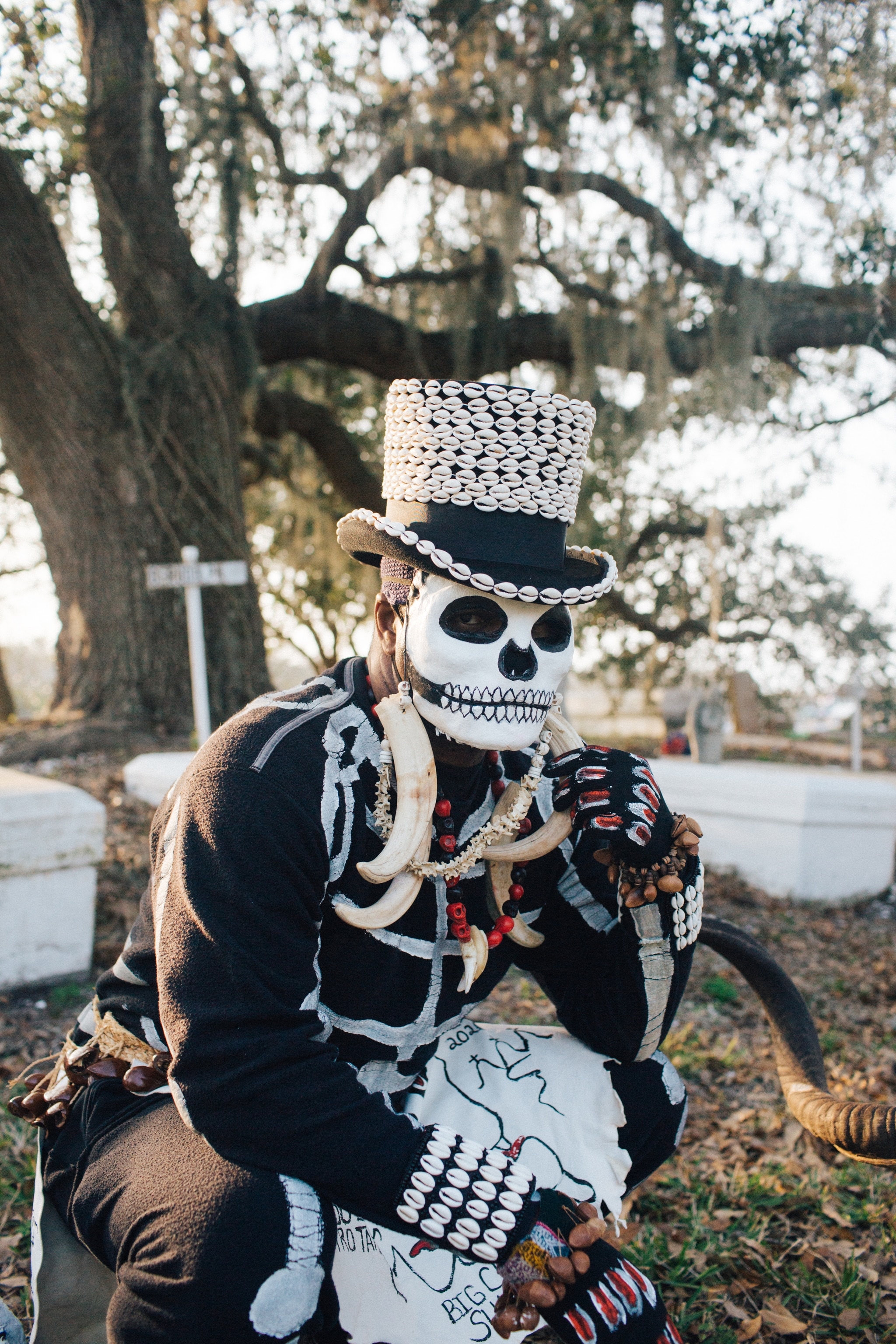
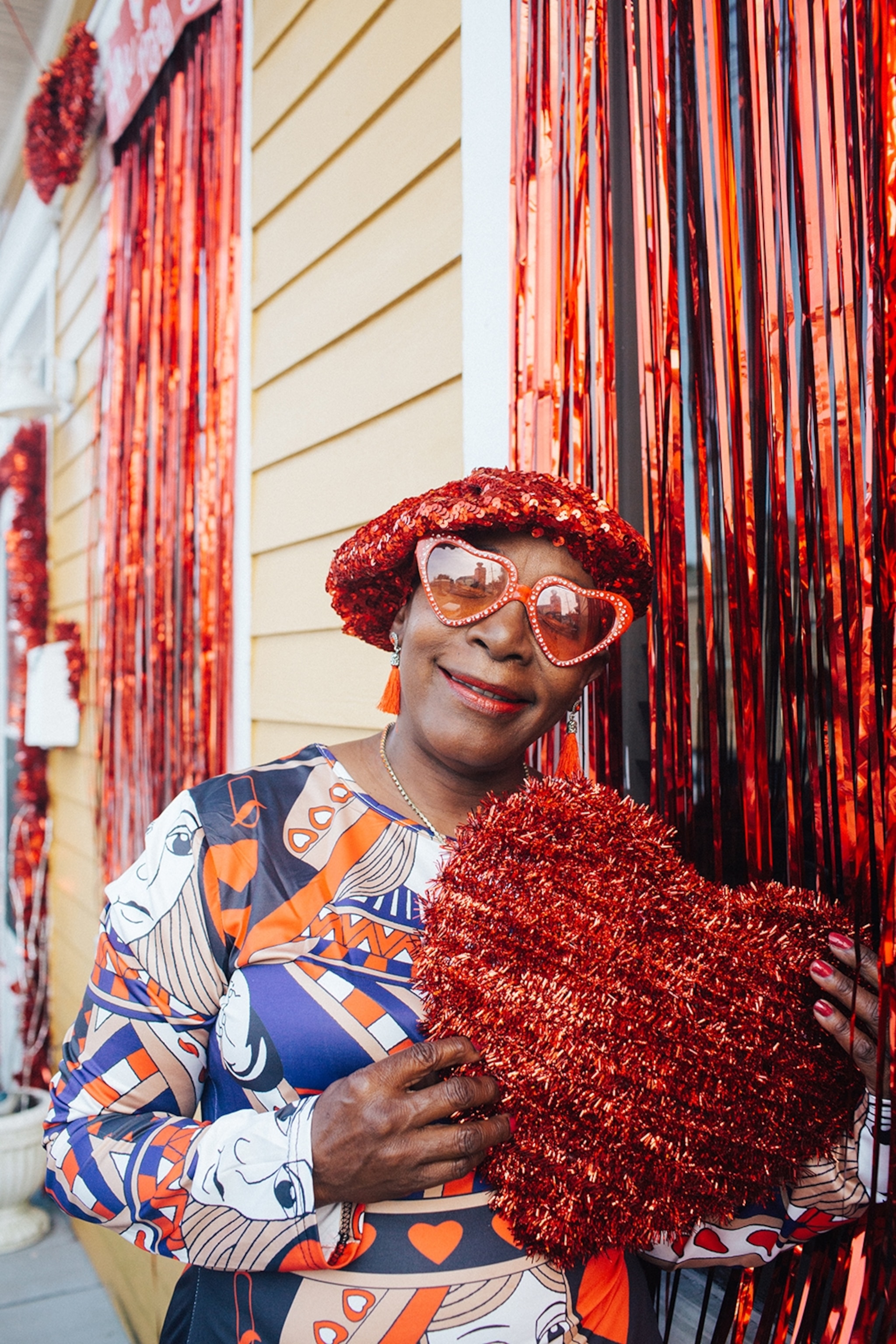
The over-the-top festivities—not to the mention the alcohol consumption—may be what many outside the city associate with Mardi Gras. But for locals, the holiday is the basis for family traditions, from cheering on students in school marching bands and dance teams, to the culmination of a high-society debutante season. (Is Alabama home to America’s oldest Mardi Gras celebration?)
It’s also about the creative, spiritual year-long effort to hand-sew elaborate suits for the centuries-old Mardi Gras Indians (groups representing some of the city’s Black celebrants), as well as the process for other locals to make ostentatious costumes for the joy of strutting about in the French Quarter.
That’s why Chan didn’t hesitate when the opportunity to dance with the Flagettes came around again this year, even though there’d be no crowd.
“It’s like being a kid, and you don’t necessarily have a full grasp of how the world works and what can be done,” Chan said of the costumes. “But you see something, and you’re inspired by it, and you’re like, Oh, I’d like to be that.”
Mardi Gras can feel magical, but planning for it—costumes, suits, decorations, dances, and even parade throws (the trinkets float riders toss to spectators)—takes a year’s worth of hard work. These rituals support not only the social and familial fabric of the city but also an entire industry of float designers, bead shops, florists, photographers, stationers, milliners, craft stores, restaurants, bars, caterers, and artists.
In the absence of these rituals, “you’re seeing more of a spotlight on the artistry than the partying aspect,” said Suzanne Perron, who designs couture gowns for debutantes and Carnival royalty. Still, she said, “there’s this entire year of missed opportunity.”

Ripple effects
Mardi Gras “is one of the top three lucrative weekends” of the year for Kisha Shorter, a French Quarter bartender, offering the kind of cash that would allow her to make rent in a single shift. But that wasn’t the case this year.
Mayor LaToya Cantrell announced a major crackdown through the usual Carnival finale on Mardi Gras Day: Bars were closed citywide, and package liquor sales, street performers, and vendors were banned from the French Quarter. The rule change came amid mixed messaging from local leaders, who at turns welcomed tourists for the season, enforced social distancing, and blamed locals for the new restrictions. (Blame evolution for our compulsion to socialize despite the risk of COVID-19.)
For Shorter, it doesn’t really matter why the rules were instituted. Though she took on extra shifts at a usually busy Bourbon Street bar to help make ends meet, Shorter spent the first Mardi Gras Day in five years not working.
“Property taxes are still due. Licensing fees are still due. Rent’s still due,” she said. “Everyone’s mentally exhausted.”
At a recent motorcade protest for the hospitality industry, one person summed up the collective sentiment on a hand-lettered sign: “‘Martyr’ is not in our job description.”
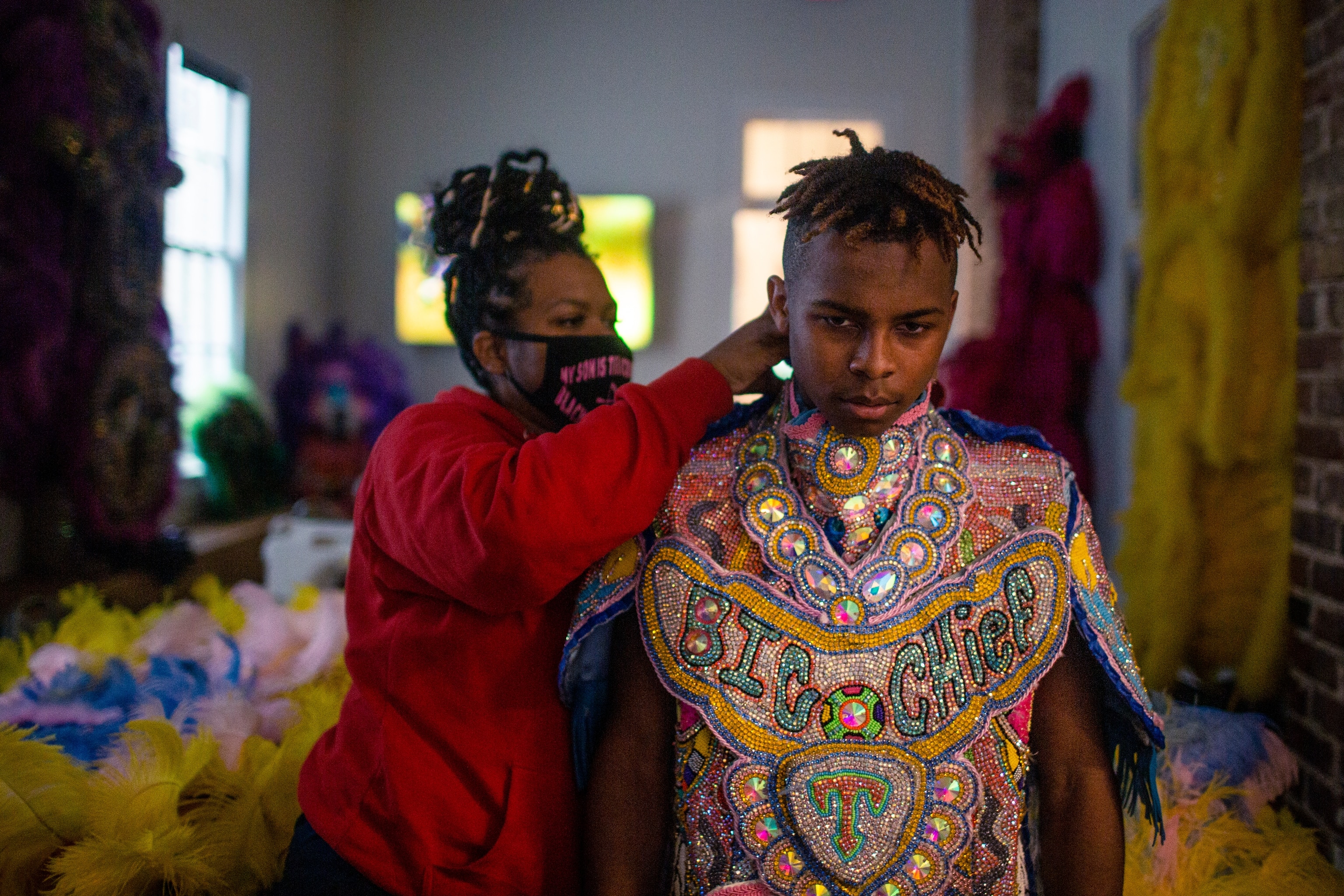
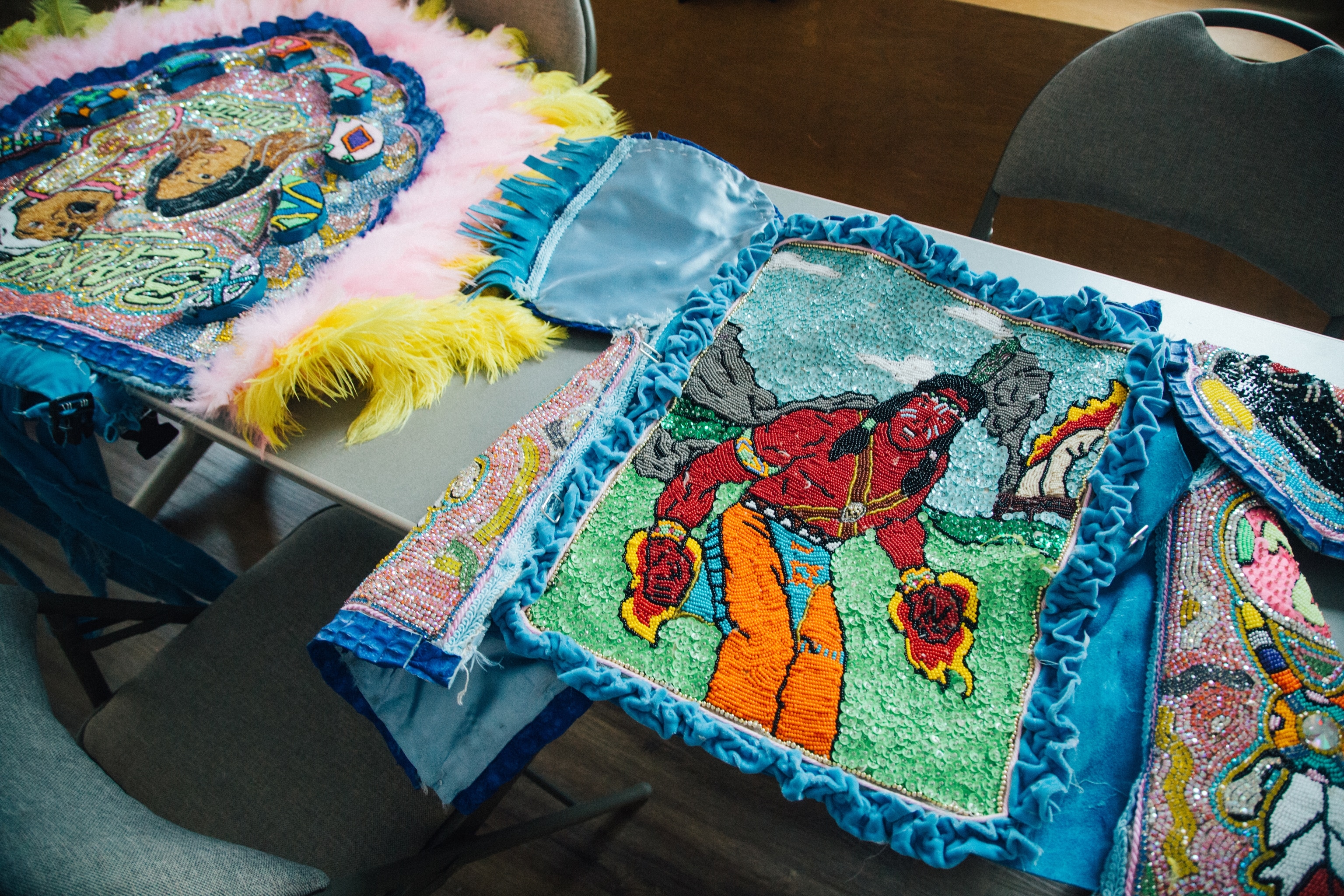
Looking out for the community
For the city’s Black residents, the regulations have echoes of Mardi Gras’s racial disparities; parade organizations were forced to integrate less than 30 years ago. In addition to the bar closures, city officials said, typically busy downtown thoroughfares like Bourbon Street and Frenchmen Street would be open only to those visiting hotels, shops, or restaurants. But the underpass on North Claiborne Avenue—one of the centers of festivities for the city’s Black community—would be gated off.
To Terrance Williams, Jr., the 17-year-old Big Chief of the Black Hawk Hunters Mardi Gras Indians, that decision cut deeply. “That’s where I met my first Indian,” Williams said.
When Mardi Gras Indians step out in all their finery on Mardi Gras Day, it’s to large crowds who fawn over the craftsmanship of the suits and are eager to hear the gangs perform traditional songs. Like many leaders in his community, Williams decided weeks before the new restrictions were announced that his gang would not wear their costume masks on Mardi Gras Day, breaking a tradition he’s practiced for about half his life.
“The Mardi Gras Indians are for the community, and with everything going on, I want to make sure my community is safe,” Williams said. “I don’t want to go out and draw a crowd. ... It’s taking a lot out of me not to mask, but I know doing so is going to help us get through.” Instead, Williams said, he’s already started sewing his suit for next year.
Marching on
That commitment is one Barnes, of the Northside Skull and Bone Gang, knows too. On a recent Sunday afternoon, he made an elaborate skull mask out of flour, baling wire, and newspaper, just like his ancestors had done for hundreds of years. The difference is, he’ll never wear this one. Like Williams, Barnes decided weeks ago that the Northside Skull and Bone Gang would not appear on Mardi Gras.
“Carnival is, in a large way, about the ritual to get to it,” Barnes said. “What happens on Mardi Gras is just the release.”
The early dawn appearance of the Northside Skull and Bone Gang means most revelers will never see them nor hear their reminders of human mortality. But no matter, said Barnes. Everyone everywhere is a part of it.
“Whether they want it or not,” he added. “Our motto is ‘you next,’ so you need to wake up while you have a chance.”
Instead, Barnes said, he’ll honor the spirituality of Mardi Gras and call on his ancestors by lighting candles, setting an altar, and saying prayers for the cultural leaders the city has lost since he last donned a homemade skull. Among those he’ll pray for, he said, is Ronald Lewis, who operated the House of Dance and Feathers in the city’s 9th Ward and was the oldest Bone Gang member when he died in March 2020 of COVID-19.
“It’s about remembering them and honoring them,” Barnes said. “Carnival season is a spiritual thing too.”
The coronavirus vaccine, Barnes said, is what gives the city hope for next year.
“The world is shook upside down right now,” he said, but added that he’s looking forward to when things are set right and there’s dancing in the New Orleans streets again. “We have to take care of each other so we can get back to second-line stepping on Mardi Gras Day.”

As the Carnival season came to a close, many of the artists Estevez works with are already preparing for next year, crafting flowers for the home decorations they hope will be a new annual tradition.
“New Orleans doesn’t want you to give up on it—ever,” Estevez said. “To be a successful person to live here, you have to be willing to pivot when [the city] needs you to. … You can’t stop this city. Soul is viral.”
Chelsea Brasted is a freelance writer in her hometown of New Orleans. You can follow her on Twitter.
Akasha Rabut is a New Orleans-based photographer. She is author of “Death Magick Abundance,” a nearly-decade-long look at the Second Line parades of New Orleans and its residents. Follow her on Instagram @akasharabut.




